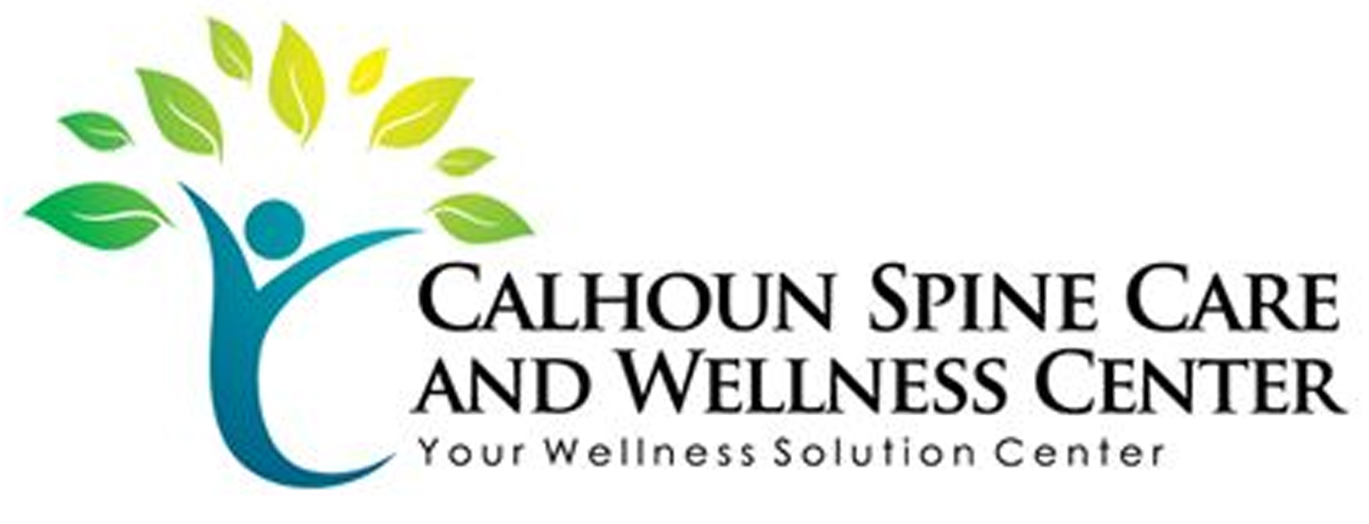You know that joint flexibility plays a vital role in your overall health and athletic performance, but how well do you really understand it? A quiz can help you assess your knowledge on various aspects, from common myths to effective stretching techniques. By exploring your daily habits and the impact of nutrition on flexibility, you might uncover insights that could change your approach to mobility. Are you ready to discover what you really know about enhancing your joint flexibility and movement? The answers might surprise you.
Importance of Joint Flexibility
Joint flexibility is essential for maintaining overall mobility and preventing injuries. When your joints move freely, you can perform daily activities with ease, whether it's bending down to tie your shoes or reaching for something on a high shelf. Improved flexibility contributes to better range of motion, allowing you to reach your fitness goals without straining your body.
Incorporating flexibility training into your routine can greatly enhance your athletic performance. Whether you're running, swimming, or participating in team sports, having flexible joints can improve your agility and speed. You'll notice that your movements become smoother, which helps reduce the risk of injuries like sprains and strains.
Moreover, joint flexibility plays a critical role in posture. When your joints and muscles are flexible, you can maintain proper alignment, which helps prevent discomfort and pain in your back and neck. This alignment is essential for both static and dynamic movements, ensuring you stay balanced and coordinated.
Lastly, flexibility can have mental benefits too. Engaging in activities like yoga or stretching can promote relaxation and reduce stress. When your body feels good, your mind often follows suit, leading to an overall sense of well-being.
Common Myths About Flexibility
You might believe that stretching always prevents injuries or that flexibility is something you're born with.
In reality, these ideas are common myths that can mislead your approach to fitness.
Let's clear up these misconceptions and explore what flexibility truly means for your body.
Stretching Prevents Injuries
Many people believe that stretching before exercise is the best way to prevent injuries, but this common myth doesn't hold up under scrutiny. Research shows that static stretching, in particular, may not greatly reduce injury risk. Instead, it can temporarily decrease muscle strength and performance.
Here are some key points to take into account:
- Warming Up: Engaging in light aerobic activities before your workout increases blood flow to muscles, preparing them for action.
- Dynamic Stretching: Movements like leg swings or arm circles can effectively prepare your muscles and joints for the demands of your activity.
- Conditioning: Building strength and endurance in your muscles through consistent training can be more effective in preventing injuries.
- Listening to Your Body: Pay attention to how your body feels. If you're experiencing pain or discomfort, it's essential to address those concerns rather than relying solely on stretching.
Incorporating a proper warm-up and strengthening routine can reduce your risk of injury more effectively than traditional stretching.
Flexibility Is Inherent Trait
Believing that flexibility is solely an inherent trait can lead to misconceptions about your body's potential. Many people think they're either born flexible or they're not, but the truth is, flexibility can be developed and improved with consistent effort. It's not just about genetics; your lifestyle choices play a significant role.
Your daily habits, such as how much you stretch and engage in physical activity, influence your flexibility. If you regularly incorporate stretching routines and mobility exercises into your life, you'll likely notice improvements over time. Even if you start with limited flexibility, dedication to a structured program can lead to remarkable changes.
It's also important to recognize that different activities can enhance flexibility. Practices like yoga, Pilates, and dance can help you increase your range of motion while also improving strength and balance.
So, don't sell yourself short by believing flexibility is unchangeable. Understanding that you have the power to improve your flexibility will empower you to take action.
Embrace the journey and commit to a routine that challenges your body; you might surprise yourself with how flexible you can become.
Factors Affecting Joint Movement
When it comes to joint movement, several key factors play a significant role.
Your joint structure, muscle strength, and flexibility, along with your age and activity level, all influence how well you can move.
Understanding these factors can help you improve your flexibility and overall joint health.
Joint Structure and Anatomy
Understanding joint structure and anatomy is essential for grasping how various factors influence joint movement. Your joints are intricate structures that allow you to perform a wide range of motions. The way they're built directly impacts your flexibility and mobility.
Here are some key components of joint structure to evaluate:
- Cartilage: This smooth tissue cushions the ends of bones, reducing friction and absorbing shock during movement.
- Synovial Fluid: This lubricating fluid fills the joint space, promoting smooth motion and nourishing the cartilage.
- Ligaments: These strong bands of tissue connect bones to each other, providing stability while still allowing for some movement.
- Joint Capsule: This tough, fibrous envelope surrounds the joint, holding everything in place and protecting it from injury.
Each component functions together to support your movements, whether it's running, bending, or stretching.
Understanding these elements helps you appreciate how they work harmoniously to influence your joint flexibility. By knowing how your joints are structured, you can make informed decisions about your activities and how to maintain joint health for improved movement.
Muscle Strength and Flexibility
Joint movement doesn't just depend on their structure; muscle strength and flexibility play crucial roles as well. When you engage your muscles, they generate force, allowing your joints to move smoothly and efficiently. Strong muscles support your joints, reducing the risk of injury while enhancing overall stability.
If your muscles lack strength, your joints may struggle to function properly, leading to discomfort or limited range of motion.
Flexibility is equally important. It refers to the ability of your muscles and tendons to stretch without causing damage. When your muscles are flexible, they can accommodate a greater range of motion, which directly impacts your joints.
Tight muscles can limit movement, causing strain and increasing the likelihood of injuries.
Incorporating strength training and flexibility exercises into your routine can greatly improve joint function. Resistance training helps build muscle strength, while stretching exercises enhance flexibility.
Age and Activity Level
As you age, your joints may face increased challenges, influenced greatly by your activity level. Staying active can help maintain joint health, while a sedentary lifestyle might lead to stiffness and discomfort.
Understanding how age and activity intertwine can empower you to make informed choices for your joint mobility.
Consider the following factors affecting your joints:
- Regular exercise: Activities like walking, swimming, or cycling can keep your joints lubricated and flexible.
- Strength training: Building muscle supports your joints, reducing wear and tear over time.
- Stretching routines: Incorporating stretching improves your range of motion and prevents injuries.
- Rest and recovery: Allowing time for your body to recover is essential for joint health, especially after intense activities.
Flexibility Assessment Quiz
Ready to gauge your flexibility? Understanding your current flexibility level is essential for improving your overall joint movement. This flexibility assessment quiz will help you identify areas where you might need to work on and give you a clearer picture of your physical capabilities.
First, find a spot where you can comfortably stretch. Start by standing tall, then try to reach for your toes. Can you touch them easily, or do you struggle? If you can't reach them, that may indicate tight hamstrings or lower back issues.
Next, sit on the floor with your legs extended in front of you. Try to reach forward towards your toes again. How far can you go? This movement tests both your hamstring and lower back flexibility.
Now, let's assess your shoulder flexibility. Stand against a wall and try to raise your arms overhead without arching your back. Are you able to keep your arms close to your ears? If you find it challenging, you might need to work on your shoulder mobility.
Lastly, check your hip flexibility. Sit cross-legged on the floor. How comfortable are you in this position? If you feel tightness or discomfort, it might be a sign to focus on your hip joints.
After completing these assessments, jot down your observations. Knowing your flexibility level can guide you towards targeted improvements, helping you enjoy better mobility and overall joint health.
Effective Stretching Techniques
When it comes to enhancing flexibility, effective stretching techniques play an essential role in your routine. Incorporating the right methods can help you achieve greater range of motion and reduce the risk of injury.
Here are some techniques you can easily add to your practice:
- Static Stretching: Hold each stretch for 15-30 seconds to lengthen your muscles. Focus on major muscle groups, like your hamstrings and quadriceps.
- Dynamic Stretching: Use controlled movements to warm up your muscles before exercise. Think of leg swings or arm circles that get your body ready for action.
- PNF Stretching (Proprioceptive Neuromuscular Facilitation): This advanced technique combines stretching and contracting to improve flexibility. Partner with someone, or use a wall for resistance to enhance your stretch.
- Yoga: Incorporate yoga poses, such as the Downward Dog or Cobra, to promote flexibility while also improving strength and balance.
Make sure to listen to your body while stretching. You should feel a gentle pull, but never pain.
Consistency is key, so try to stretch at least 3-4 times a week for best results. Remember, warming up your muscles before stretching can make a significant difference, so consider a light jog or brisk walk beforehand.
Daily Habits for Improvement
Incorporating simple daily habits can greatly enhance your flexibility and overall movement quality. Start by integrating short stretching sessions into your routine. Even five minutes in the morning or before bed can make a noticeable difference. Focus on dynamic stretches to warm up your muscles before activities, and static stretches to cool down afterward.
Next, make it a point to stay active throughout your day. If you sit for long periods, set a timer to remind you to stand up and move every hour. Simple activities like walking or doing light exercises can keep your joints engaged and prevent stiffness.
Consider incorporating activities such as yoga or Pilates into your weekly schedule, as they promote flexibility and body awareness.
Pay attention to your posture, too. Good posture helps maintain ideal alignment in your joints, which can prevent unnecessary strain and enhance your range of motion. Take breaks to check in with your body and adjust your posture as needed.
Lastly, listen to your body. If you feel tightness or discomfort in a certain area, don't ignore it. Address these issues with gentle stretching or mobility exercises.
Nutrition's Role in Flexibility
Nutrition plays an essential role in your flexibility and overall movement quality. What you eat directly impacts how your joints function and how well your muscles respond during physical activities. To enhance your flexibility, it's important to fuel your body with the right nutrients.
Here are some key elements to keep in mind:
- Omega-3 Fatty Acids: Found in fish, walnuts, and flaxseeds, these healthy fats can reduce inflammation and help your joints move more freely.
- Antioxidant-Rich Foods: Berries, spinach, and sweet potatoes are packed with antioxidants that combat oxidative stress, promoting better recovery and flexibility.
- Hydration: Water is essential for joint lubrication. Staying hydrated helps maintain the elasticity of your muscles and connective tissues.
- Protein: Lean meats, legumes, and dairy products provide essential amino acids necessary for muscle repair and growth, which can improve your overall range of motion.
Incorporating these foods into your diet isn't just about improving flexibility; it's about supporting your entire body's performance.
When your body receives the right nutrients, you'll notice a difference in how easily you can stretch and move. Remember, a balanced diet contributes to strong muscles and healthy joints, making it easier for you to achieve and maintain flexibility.
Tracking Your Progress
Many people overlook the importance of tracking their progress in flexibility training. You might think that just doing your stretches is enough, but keeping a record can vastly improve your results. By monitoring your flexibility journey, you can identify what's working and what needs adjustment, ultimately helping you reach your goals faster.
Start by setting clear, measurable goals. Do you want to touch your toes, achieve a deeper squat, or perform a specific yoga pose? Write these down and establish a timeline for when you'd like to achieve them.
Next, create a tracking system. This could be a simple journal, a spreadsheet, or an app designed for fitness tracking. Regularly note your flexibility measurements, the types of stretches you perform, and how you feel after each session.
Make it a habit to review your progress weekly or monthly. This reflection will motivate you and help you recognize patterns. If you find certain stretches yield better results, focus more on those. Conversely, if something isn't working, don't hesitate to switch things up.
You should also celebrate small victories along the way. Each improvement, no matter how minor, deserves recognition. Whether it's bending a little deeper or holding a stretch longer, acknowledging these milestones keeps you motivated.
Conclusion
Improving your joint flexibility and movement is essential for your overall health and athletic performance. By understanding the importance of flexibility, debunking common myths, and adopting effective stretching techniques, you can make significant strides in your mobility. Remember to incorporate daily habits and mindful nutrition to support your journey. As you track your progress, you'll notice enhanced movement and reduced risk of injury. Embrace these practices to enjoy a more active and fulfilling life!



